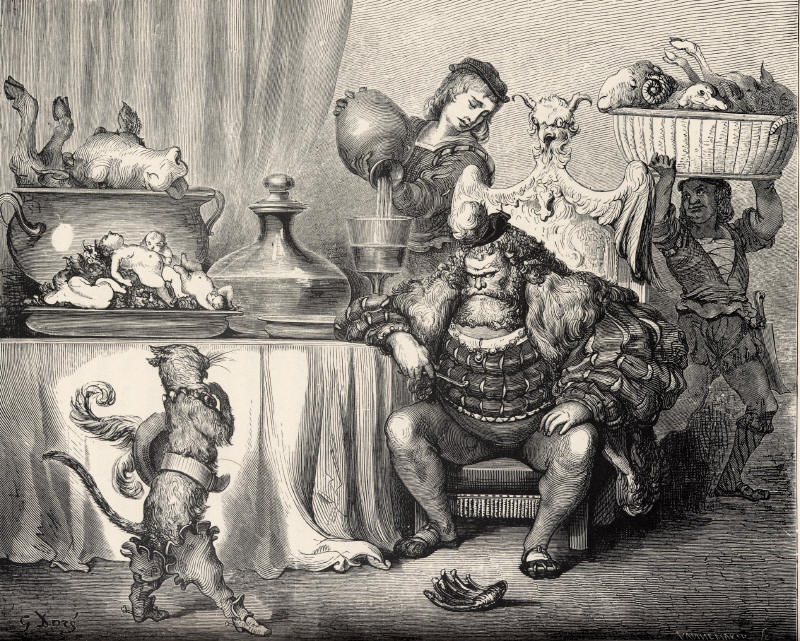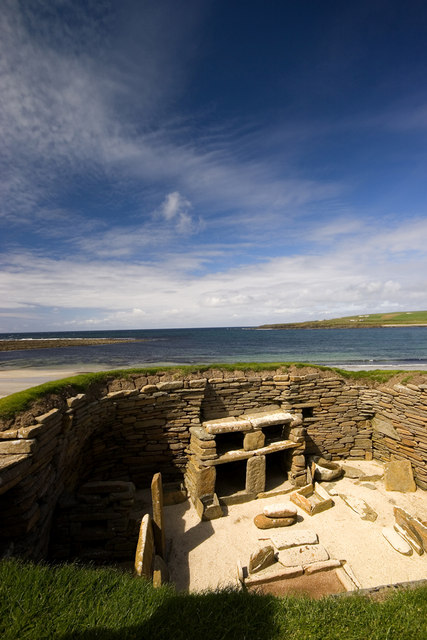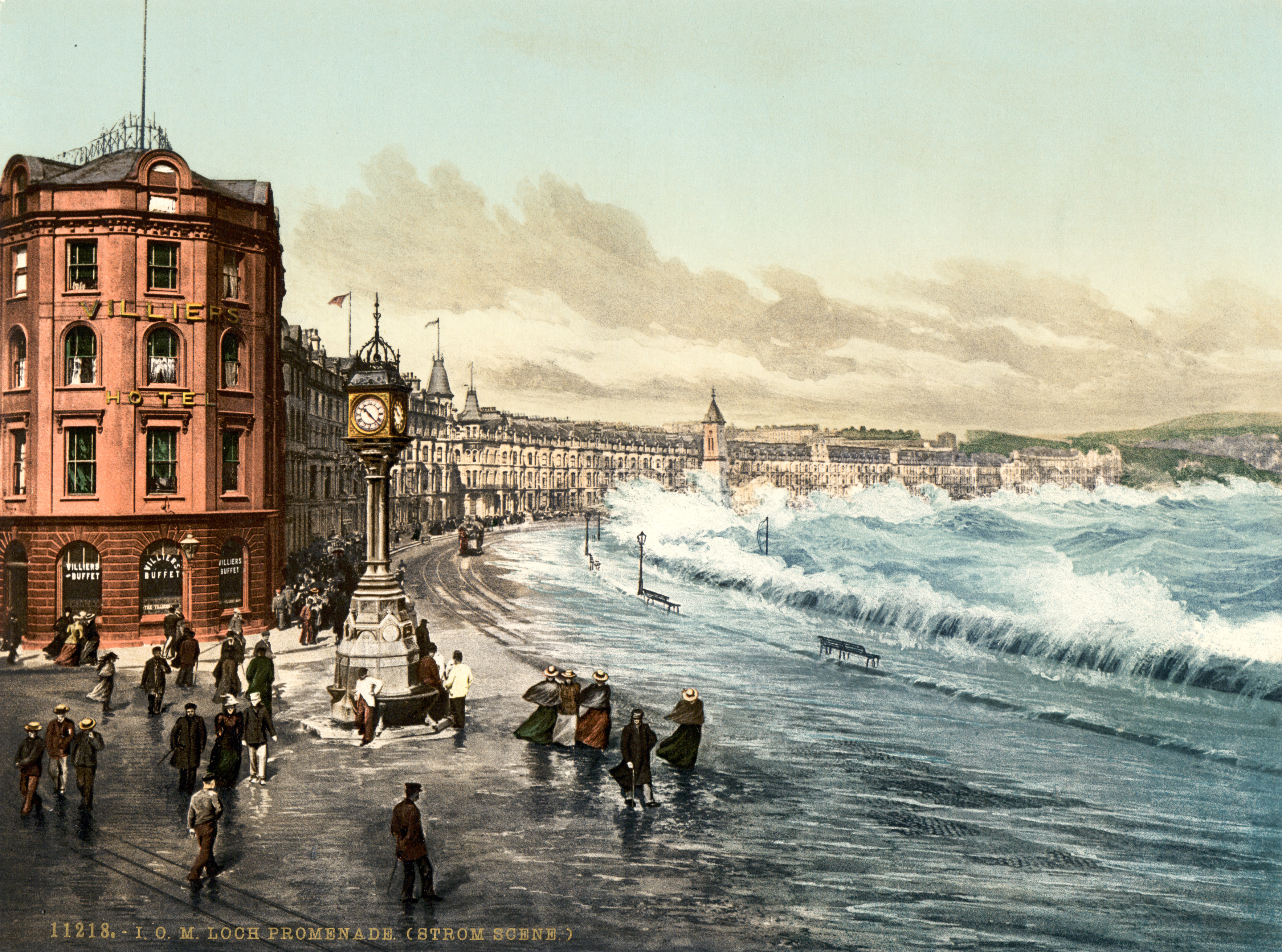|
Buggane
In Manx folklore, a (or ''boagane'') was a huge ogre-like creature native to the Isle of Man. Some have considered them akin to the Scandinavian troll. Manx folklore A shapeshifter, the buggane is generally described as a malevolent being that can appear as a large black calf or human with ears or hooves of a horse. It was large enough to tear the roof off a church. Its natural form is described as "covered with a mane of coarse, black hair; it had eyes like torches, and glittering sharp tusks". Another tales describes it as a huge man with bull's horns, glowing eyes and large teeth. As magical creatures, bugganes were unable to cross water or stand on hallowed ground. St Trinian's Church The most famous story recounts a buggane who found himself an inadvertent stowaway on a ship bound for Ireland. Determined to return to the Isle of Man, he caused a storm and guided the ship towards the rocky coast of Contrary Head. His plan was interdicted through the intervention of St. Tr ... [...More Info...] [...Related Items...] OR: [Wikipedia] [Google] [Baidu] |
Cabyll-ushtey
Glashtyn ( Manx English: glashtin, glashtan or glashan; gv, glashtin or ) is a legendary creature from Manx folklore. The glashtin is said to be a goblin that appears out of its aquatic habitat, to come in contact with the island folk; others claim it takes the shape of a colt, or equate it to the water horse known locally as ''cabyll-ushtey''. Yet another source claims the glashtin was a water-bull (''tarroo-ushtey'' in Manx), half-bovine and half-equine. Some tales or lore recount that it has pursued after women, ending in the stock motif of escape by cutting loose the skirt-hem, although in one modern version her escape is achieved by a rooster's crowing; in that tale the glashtin pretends to be a handsome man but is betrayed by his horse-ears. Lexicography The word ''glashtin'' is thought to derive from Celtic ''glais'' ( sga, glais, glaise, glas), meaning "stream", or sometimes even the sea. Celtic Manx language "Glashtin" is the orthography in the Manx language ... [...More Info...] [...Related Items...] OR: [Wikipedia] [Google] [Baidu] |
Manx Folklore
The culture of the Isle of Man is influenced by its Celtic and, to a lesser extent, its Norse origins, though its close proximity to the United Kingdom, popularity as a UK tourist destination, and recent mass immigration by British migrant workers has meant that British influence has been dominant since the Revestment period. Recent revival campaigns have attempted to preserve the surviving vestiges of Manx culture after a long period of Anglicisation, and significant interest in the Manx language, history and musical tradition has been the result. Language The official language of the Isle of Man is English. Manx Gaelic has traditionally been spoken but is now considered "critically endangered". The Manx Gaelic language is a Goidelic Celtic language and is one of a number of insular Celtic languages spoken in the British Isles. Manx Gaelic has been officially recognised as a legitimate autochthonous regional language under the European Charter for Regional or Minor ... [...More Info...] [...Related Items...] OR: [Wikipedia] [Google] [Baidu] |
Ogre
An ogre ( feminine: ogress) is a legendary monster depicted as a large, hideous, man-like being that eats ordinary human beings, especially infants and children. Ogres frequently feature in mythology, folklore, and fiction throughout the world. They appear in many classic works of literature, and are most often associated in fairy tales and legend with a taste for infants. In mythology, ogres are often depicted as inhumanly large, tall, and having a disproportionately large head, abundant hair, unusually colored skin, a voracious appetite, and a strong body. Ogres are closely linked with giants and with human cannibals in mythology. In both folklore and fiction, giants are often given ogrish traits (such as the giants in " Jack and the Beanstalk" and " Jack the Giant Killer", the Giant Despair in ''The Pilgrim's Progress'', and the Jötunn of Norse mythology); while ogres may be given giant-like traits. Famous examples of ogres in folklore include the ogre in " Puss in Boo ... [...More Info...] [...Related Items...] OR: [Wikipedia] [Google] [Baidu] |
Isle Of Man
) , anthem = " O Land of Our Birth" , image = Isle of Man by Sentinel-2.jpg , image_map = Europe-Isle_of_Man.svg , mapsize = , map_alt = Location of the Isle of Man in Europe , map_caption = Location of the Isle of Man (green) in Europe (dark grey) , subdivision_type = Sovereign state , subdivision_name = United Kingdom , established_title = Norse control , established_date = 9th century , established_title2 = Scottish control , established_date2 = 2 July 1266 , established_title3 = English control , established_date3 = 1399 , established_title4 = Revested into British Crown , established_date4 = 10 May 1765 , official_languages = , capital = Douglas , coordinates = , demonym = Manx; Manxman (plural, Manxmen); Manxwoman (plural, Manxwomen) , ethnic_groups = , ethnic_groups_year = 2021 , ethnic_groups_ref = Official census statistics provided by Statistics Isle of Man, Isle of Man Government: * * , religion = , religion_year = 2021 , religi ... [...More Info...] [...Related Items...] OR: [Wikipedia] [Google] [Baidu] |
Port Erin
Port Erin ( gv, Purt Çhiarn, meaning ''lord's port'') is a seaside village in the south-west of the Isle of Man, in the historic parish of Rushen. It was previously a seaside resort before the decline of the tourist trade. Administratively it is designated as a village district, with its own board of commissioners. The district covers around 1 square mile, and is adjacent to: Port St Mary to the south-east; the main part of Arbory and Rushen parish district to the north and east; the sea to the west; and an exclave of Arbory and Rushen parish district (including the village of Cregneash) to the south. Following recent residential expansion, the settlement is now contiguous with that of Port St Mary, and on 18 July 2018 Tynwald authorised a public enquiry into the proposed expansion of the district boundary to include some of this expansion. The village was twinned with Latour-de-France. Demographics * Population (2011 census) 3,530 * Adjacent village: Port St Mary * Larges ... [...More Info...] [...Related Items...] OR: [Wikipedia] [Google] [Baidu] |
Chicken Rock
Chicken Rock ( gv, Carrick ny Kirkey), part of Rushen parish, is the southernmost island administered by the Isle of Man. It lies southwest of the Calf of Man, off Spanish Head on the Manx mainland. The most prominent feature of the rock is the 19th century Chicken Rock Lighthouse. The lighthouse was first lit in 1875, and is owned and maintained by the Northern Lighthouse Board The Northern Lighthouse Board (NLB) is the general lighthouse authority for Scotland and the Isle of Man. It is a non-departmental public body responsible for marine navigation aids around coastal areas. History The NLB was formed by Act of .... See also * List of lighthouses in the Isle of Man References External linksNorthern Lighthouses Board Islands of the Isle of Man {{IsleofMan-geo-stub ... [...More Info...] [...Related Items...] OR: [Wikipedia] [Google] [Baidu] |
Scotland
Scotland (, ) is a country that is part of the United Kingdom. Covering the northern third of the island of Great Britain, mainland Scotland has a border with England to the southeast and is otherwise surrounded by the Atlantic Ocean to the north and west, the North Sea to the northeast and east, and the Irish Sea to the south. It also contains more than 790 islands, principally in the archipelagos of the Hebrides and the Northern Isles. Most of the population, including the capital Edinburgh, is concentrated in the Central Belt—the plain between the Scottish Highlands and the Southern Uplands—in the Scottish Lowlands. Scotland is divided into 32 administrative subdivisions or local authorities, known as council areas. Glasgow City is the largest council area in terms of population, with Highland being the largest in terms of area. Limited self-governing power, covering matters such as education, social services and roads and transportation, is devolved from the ... [...More Info...] [...Related Items...] OR: [Wikipedia] [Google] [Baidu] |
Douglas, Isle Of Man
Douglas ( gv, Doolish, ) is the capital and largest town of the Isle of Man, with a population of 26,677 (2021). It is located at the mouth of the River Douglas, and on a sweeping bay of . The River Douglas forms part of the town's harbour and main commercial port. Douglas was a small settlement until it grew rapidly as a result of links with the English port of Liverpool in the 18th century. Further population growth came in the following century, resulting during the 1860s in a staged transfer of the High Courts, the Lieutenant Governor's residence, and finally the seat of the legislature, Tynwald, to Douglas from the ancient capital, Castletown. The town is the Island's main hub for business, finance, legal services, shipping, transport, shopping, and entertainment. The annual Isle of Man TT motorcycle races start and finish in Douglas. History Early history In the absence of any archaeological data, the origins of the town may be revealed by analysis of the origin ... [...More Info...] [...Related Items...] OR: [Wikipedia] [Google] [Baidu] |
Jackanory
''Jackanory'' is a BBC children's television series which was originally broadcast between 1965 and 1996. It was designed to stimulate an interest in reading. The show was first transmitted on 13 December 1965, and the first story was the fairy-tale " Cap-o'-Rushes" read by Lee Montague. ''Jackanory'' continued to be broadcast until 1996, with around 3,500 episodes in its 30-year run. The final story, '' The House at Pooh Corner'' by A. A. Milne, was read by Alan Bennett and broadcast on 24 March 1996. The show was briefly revived on 27 November 2006 for two one-off stories, and the format was revived as ''Jackanory Junior'' on CBeebies between 2007 and 2009. The show's format, which varied little over the decades, involved an actor reading from children's novels or folk tales, usually while seated in an armchair. From time to time the scene being read would be illustrated by a specially commissioned still drawing, often by Quentin Blake. In 1983, Malou Bonicos was commis ... [...More Info...] [...Related Items...] OR: [Wikipedia] [Google] [Baidu] |
Joseph Delaney
Joseph Henry Delaney (25 July 1945 – 16 August 2022) was an English author, known for his dark fantasy series '' Spook's''. He started his career as a teacher and wrote science fiction and fantasy novels for adults under the pseudonym J. K. Haderack. Delaney later wrote under his real name, starting with the publication of '' The Spook's Apprentice'', in 2004, the first book in his ''Spook's'' series, which lead to international success. He published 19 books as part of the series, as well as several books which take place in the same universe. In 2014, ''The Spook's Apprentice'', was adapted into a play script and the 2014 feature film '' Seventh Son''. Delaney also published two other series: the science fiction ''Arena 13'' and dark fantasy ''Aberrations''. Life and career Joseph Henry Delaney was born on 25 July 1945 in Preston, Lancashire, the son of a labourer; he was the oldest of four children. Delaney attended Preston Catholic College and then worked as an apprentic ... [...More Info...] [...Related Items...] OR: [Wikipedia] [Google] [Baidu] |
The Last Apprentice
''Spook's'', published as ''The Last Apprentice'' series in the U.S., is a dark fantasy series of books written by British author Joseph Delaney and published in the UK by The Bodley Head division of Random House Publishing. The series consists of three arcs, titled ''The Wardstone Chronicles'', ''The Starblade Chronicles'', and ''Brother Wulf''. Plot ''Spook's'' follow Thomas "Tom" Ward, the seventh son of a seventh son who is apprenticed to Gregory to become a Spook - a master fighter of supernatural evil. John Gregory is the Spook for "the County" and gives Tom practical instruction on tackling ghosts, ghasts, witches, boggarts, and all manner of other things that serve "The Dark". Tom soon discovers that most of John Gregory's apprentices have failed for various reasons, including being killed in the process of learning how to be a Spook. As the Chronicles progress the focus expands to other characters such as the assassin Grimalkin and the young witch Alice Deane; overal ... [...More Info...] [...Related Items...] OR: [Wikipedia] [Google] [Baidu] |
Calf Of Man
Calf of Man ( gv, Yn Cholloo ) is a island, off the southwest coast of the Isle of Man. It is separated from the Isle of Man by a narrow stretch of water called the Calf Sound. Like the nearby rocky islets of Chicken Rock and Kitterland, it is part of the historic parish of Rushen and the current parish district of Arbory and Rushen. It has only two seasonal inhabitants. The word 'calf' derives from the Old Norse word ''kalfr'' which means a small island lying near a larger one. One can reach the Calf of Man by boat from either Port Erin or Port St Mary. Cow Harbour and South Harbour are the main landing places. The highest part of the island is in the west where an unnamed peak reaches above sea level. Until 1939 the island was under private ownership by the Keig family, but the island was purchased by Mr F J Dickens of Silverdale, Lancashire, who then donated it to the National Trust for it to become a bird sanctuary. In 1951 the Manx Museum & National Trust, which beca ... [...More Info...] [...Related Items...] OR: [Wikipedia] [Google] [Baidu] |
.jpg)
-Pogany-illustr-p226-glashan.jpg)





